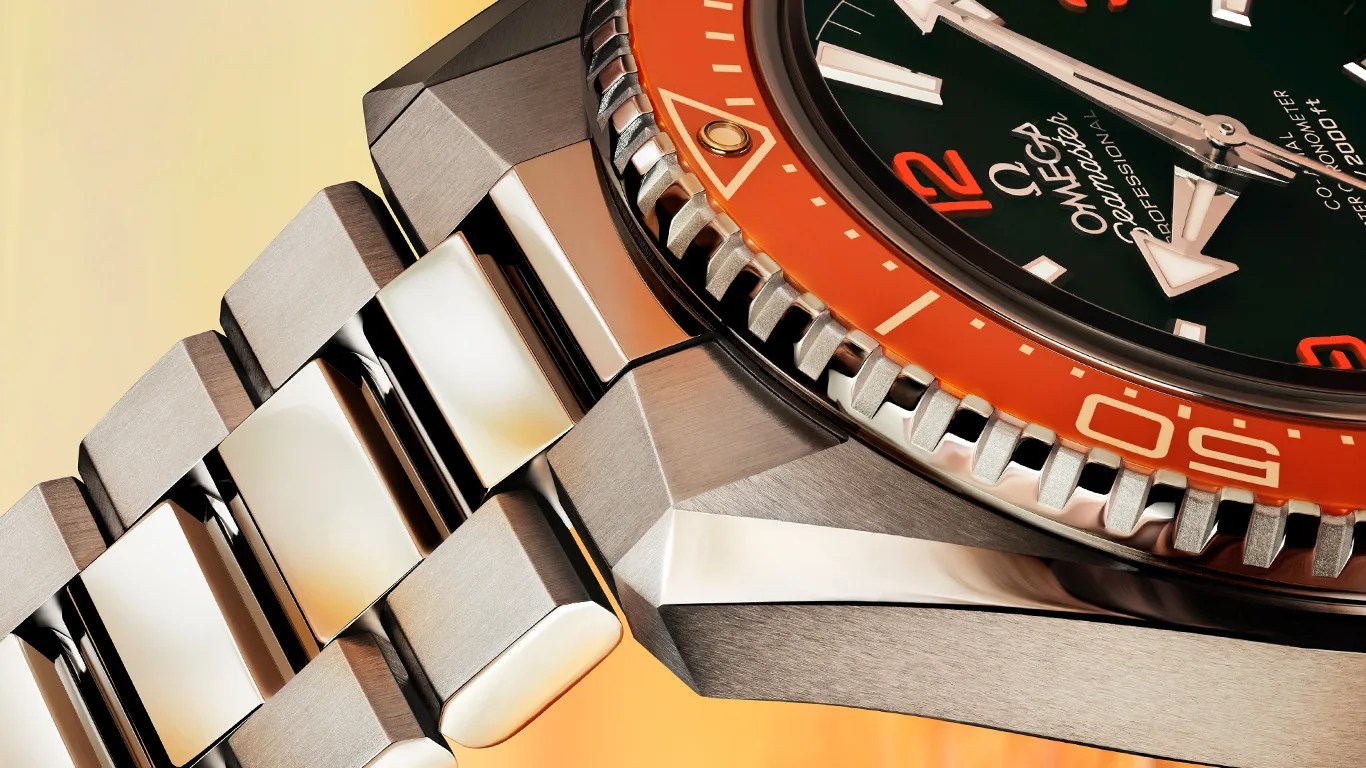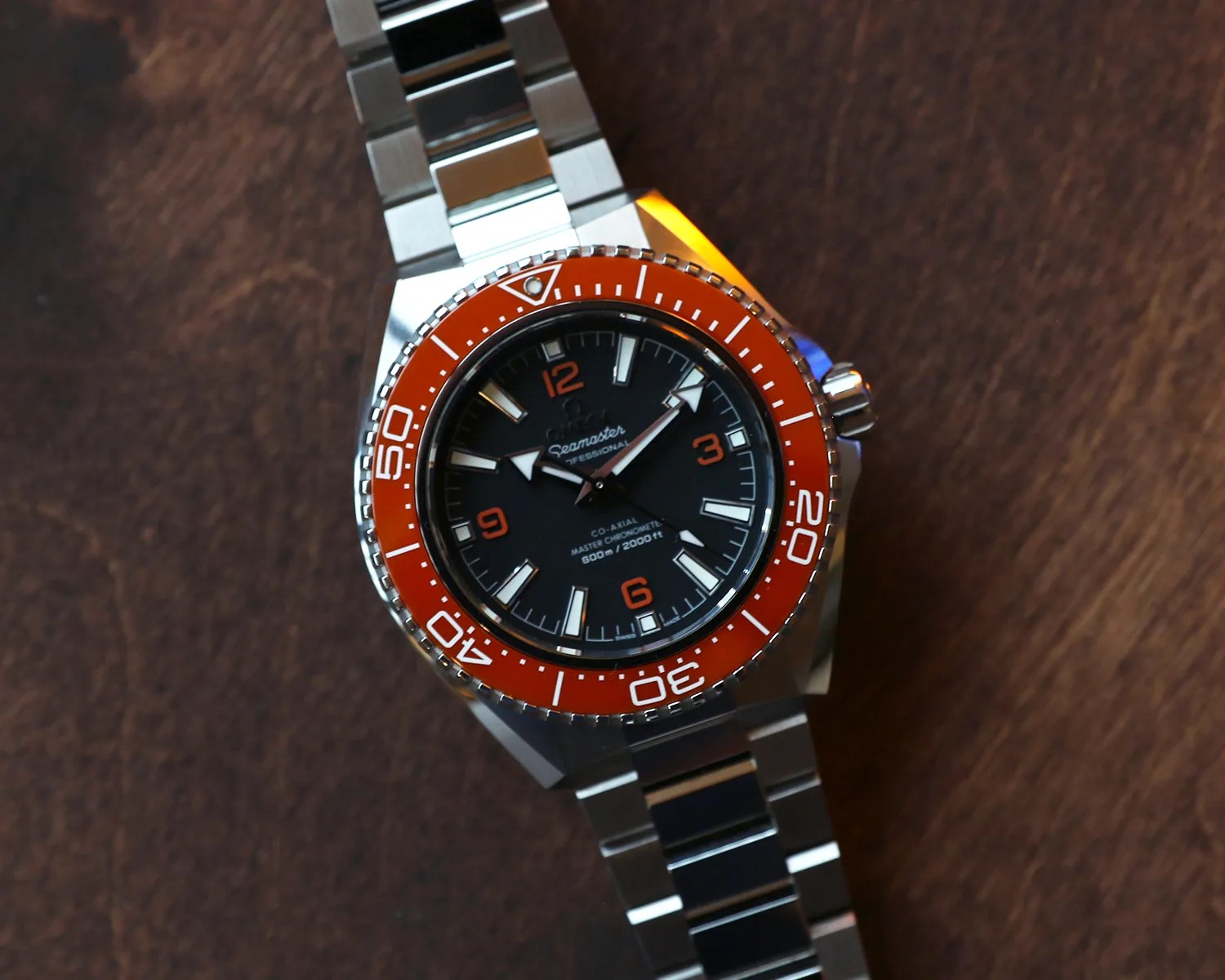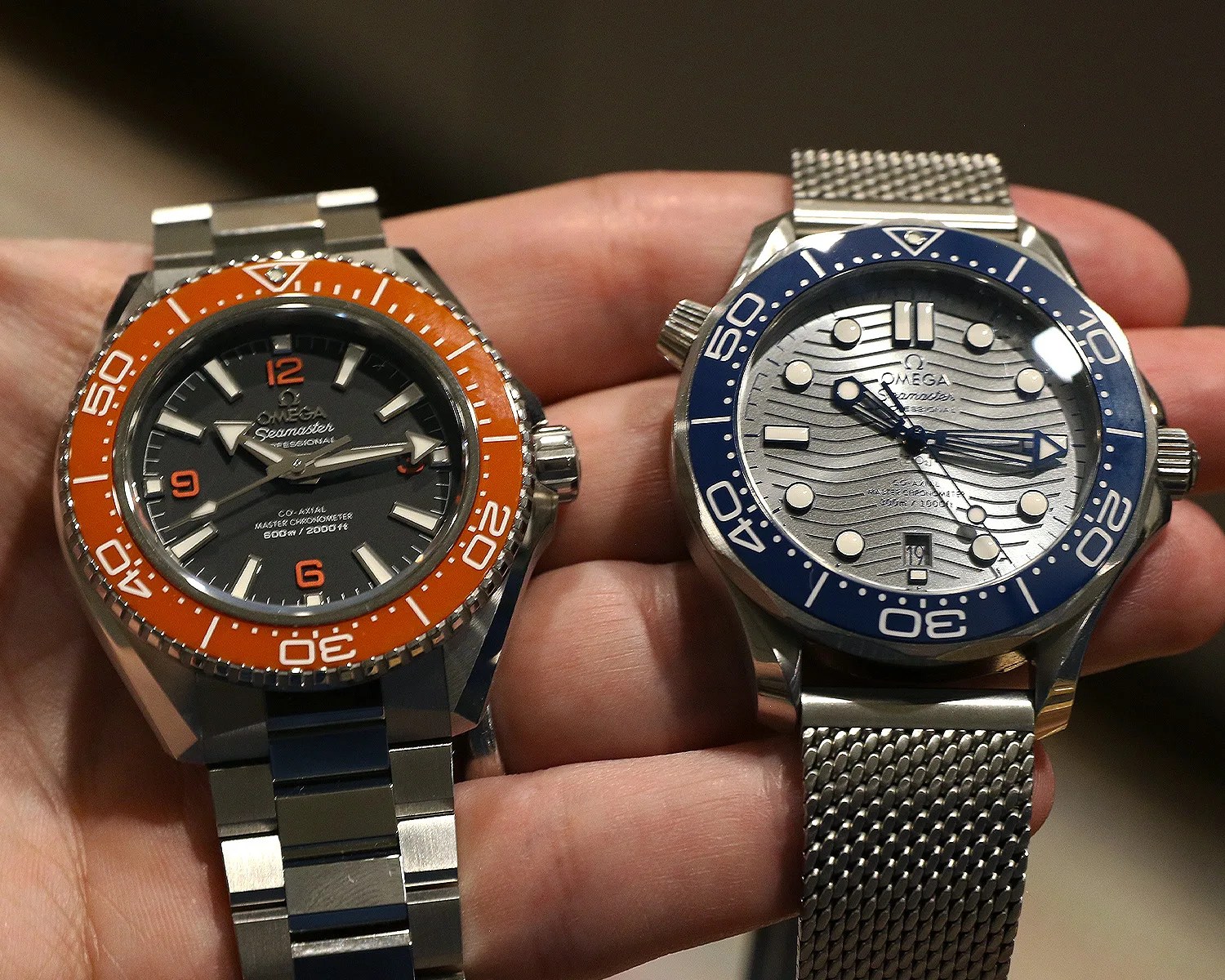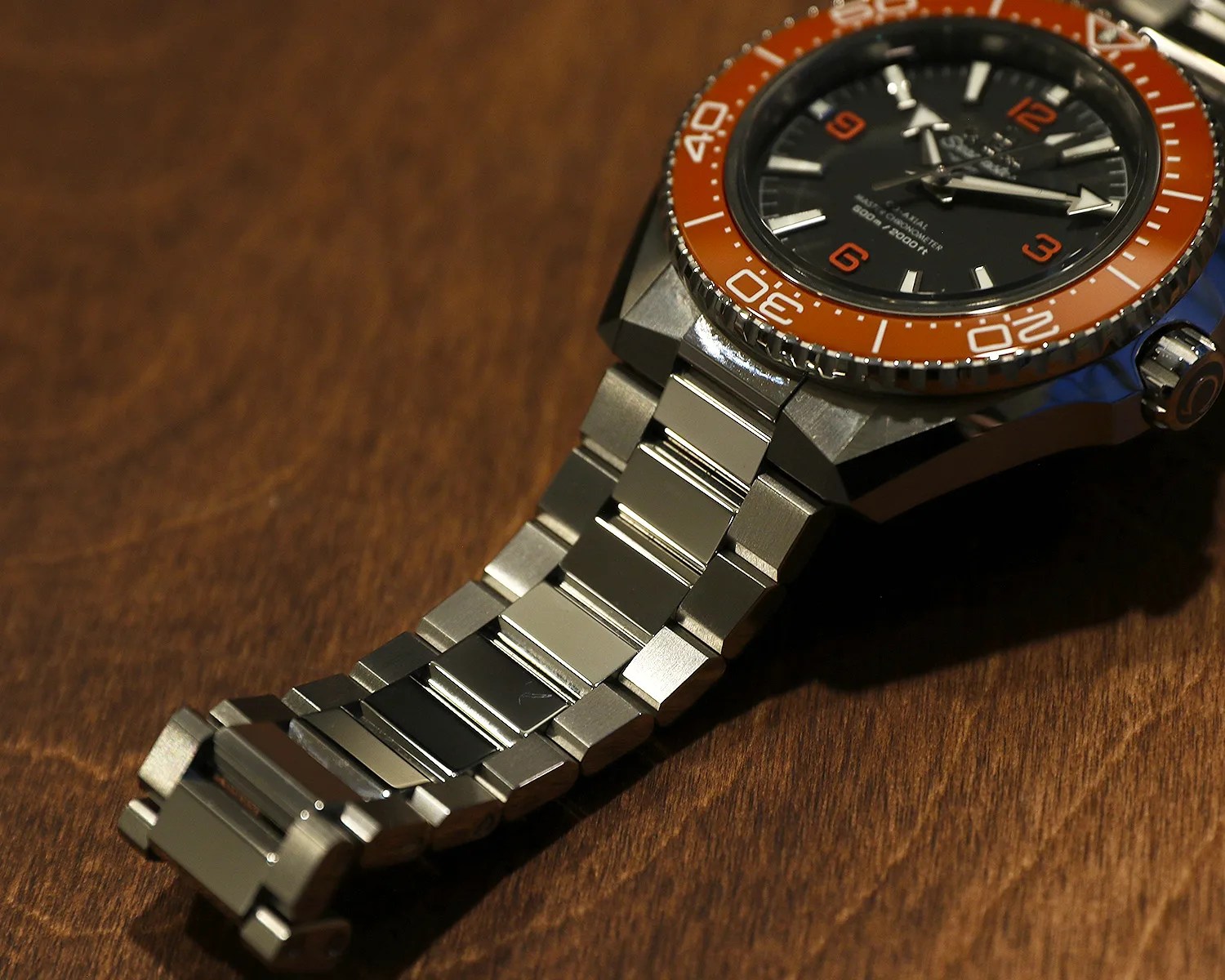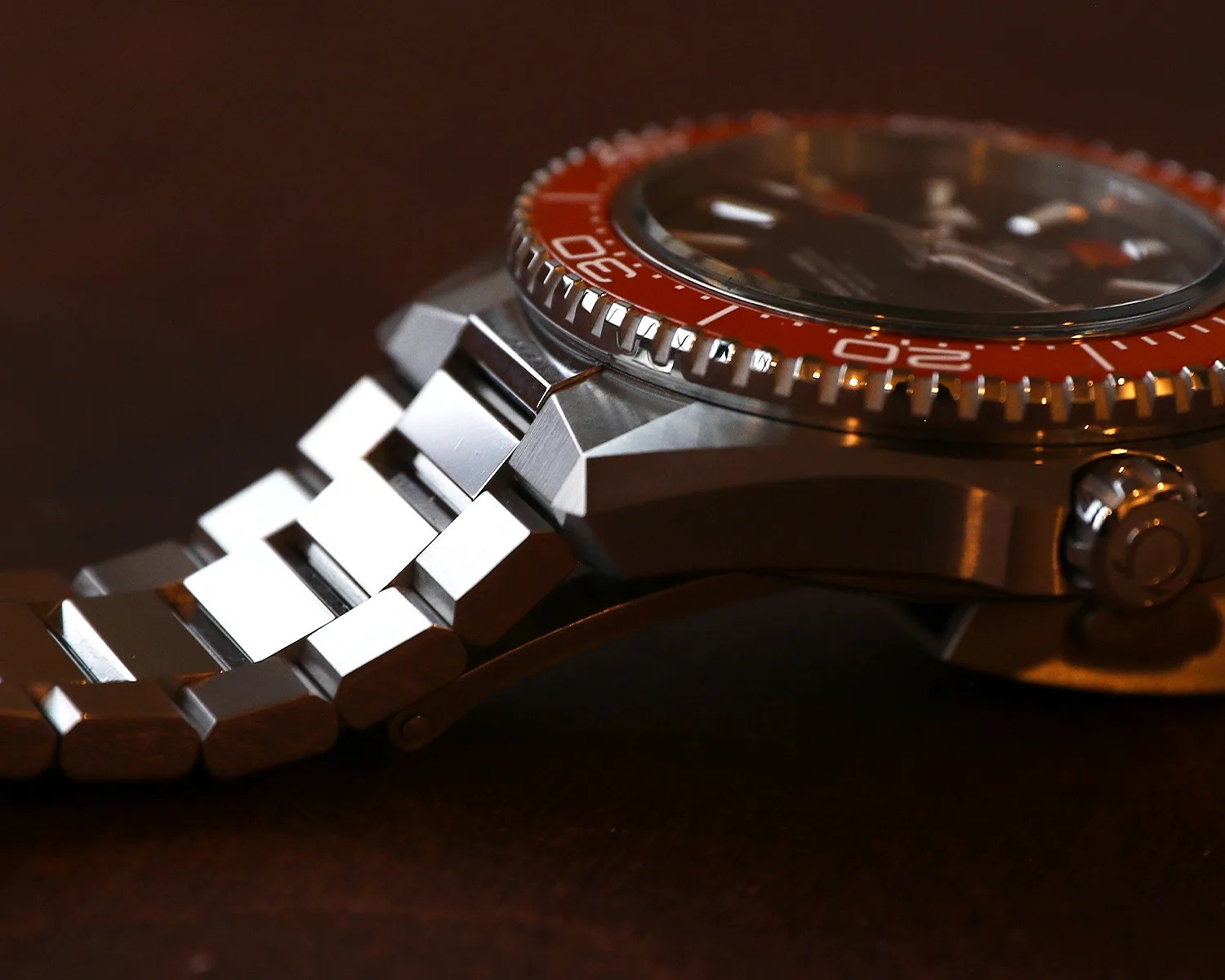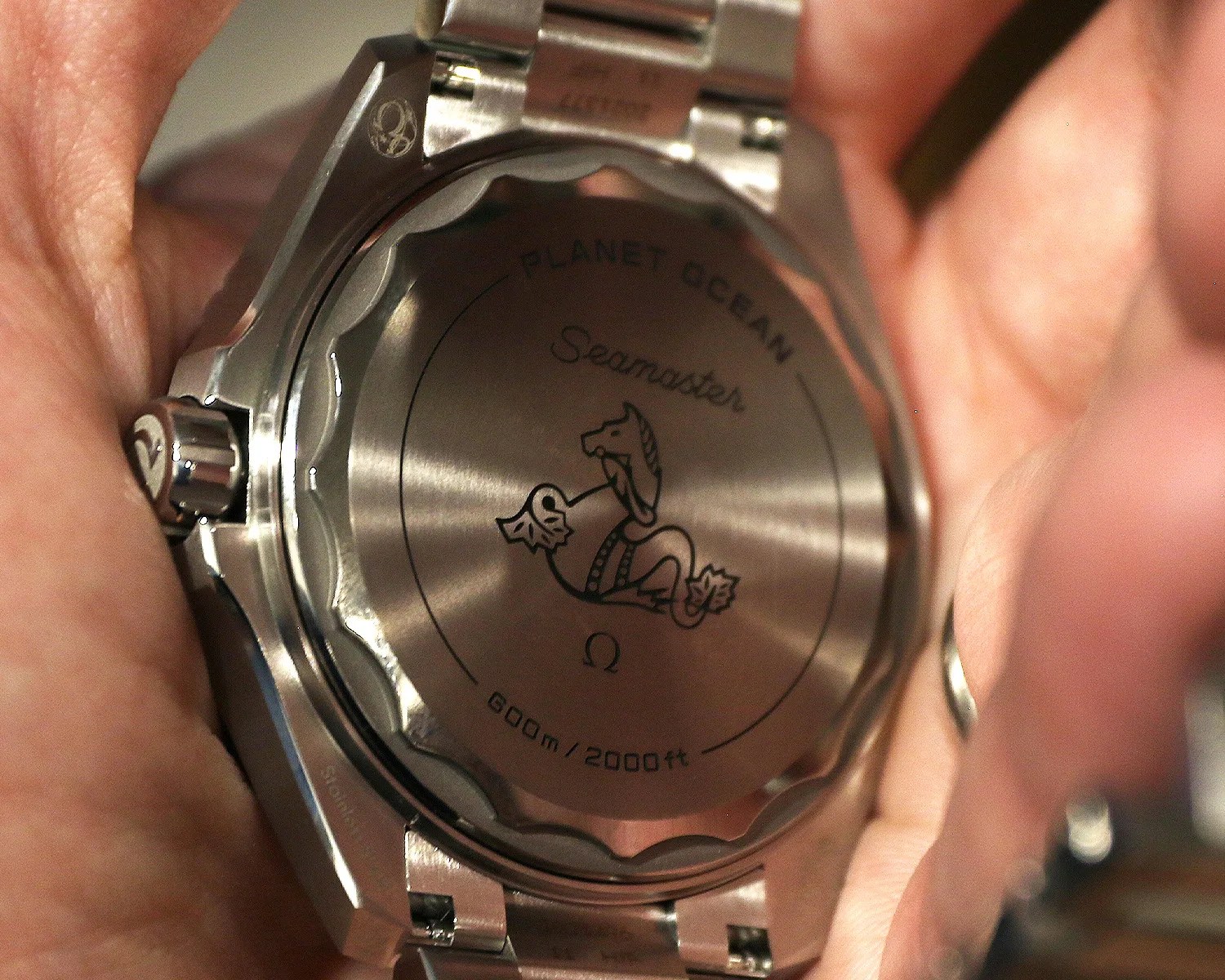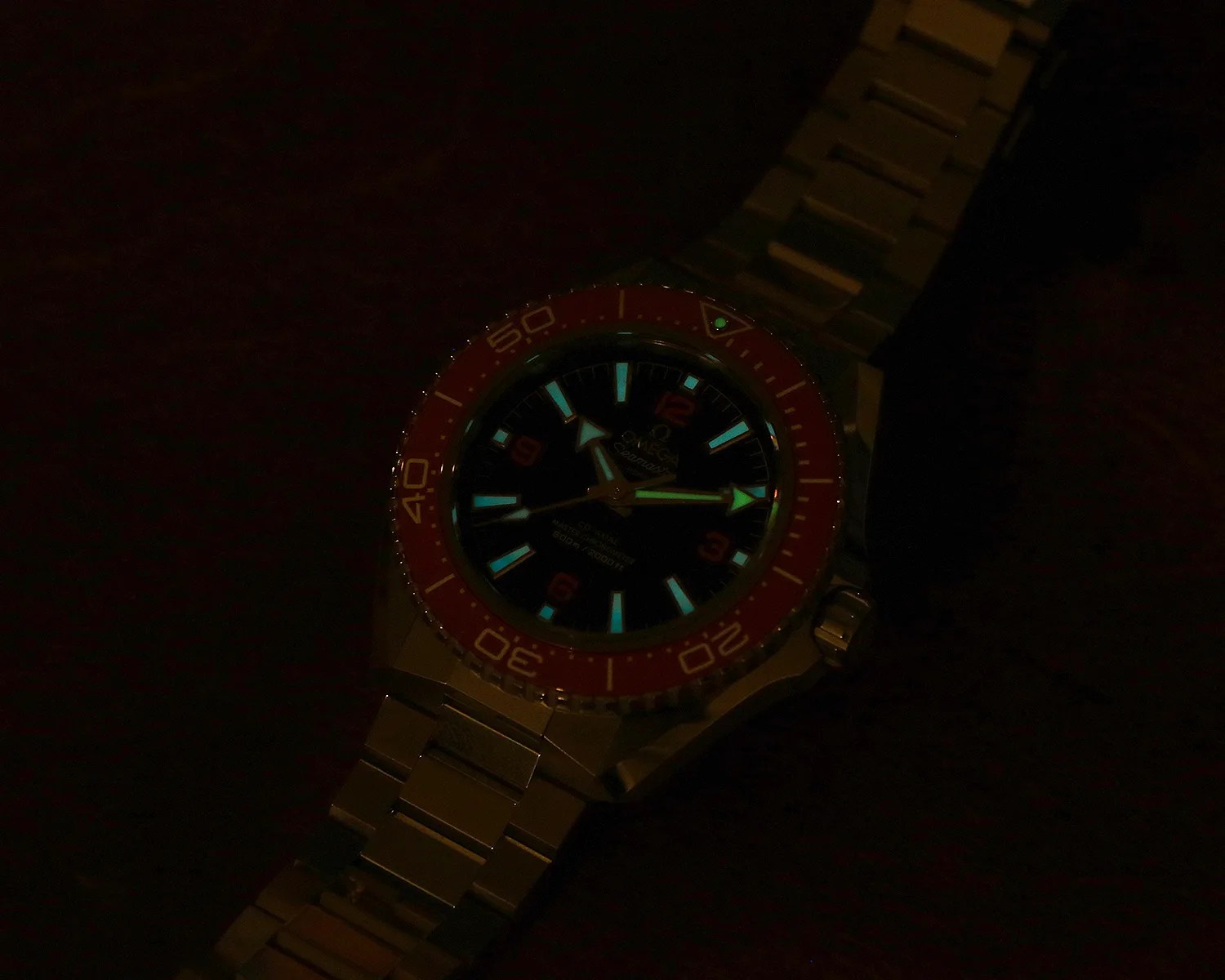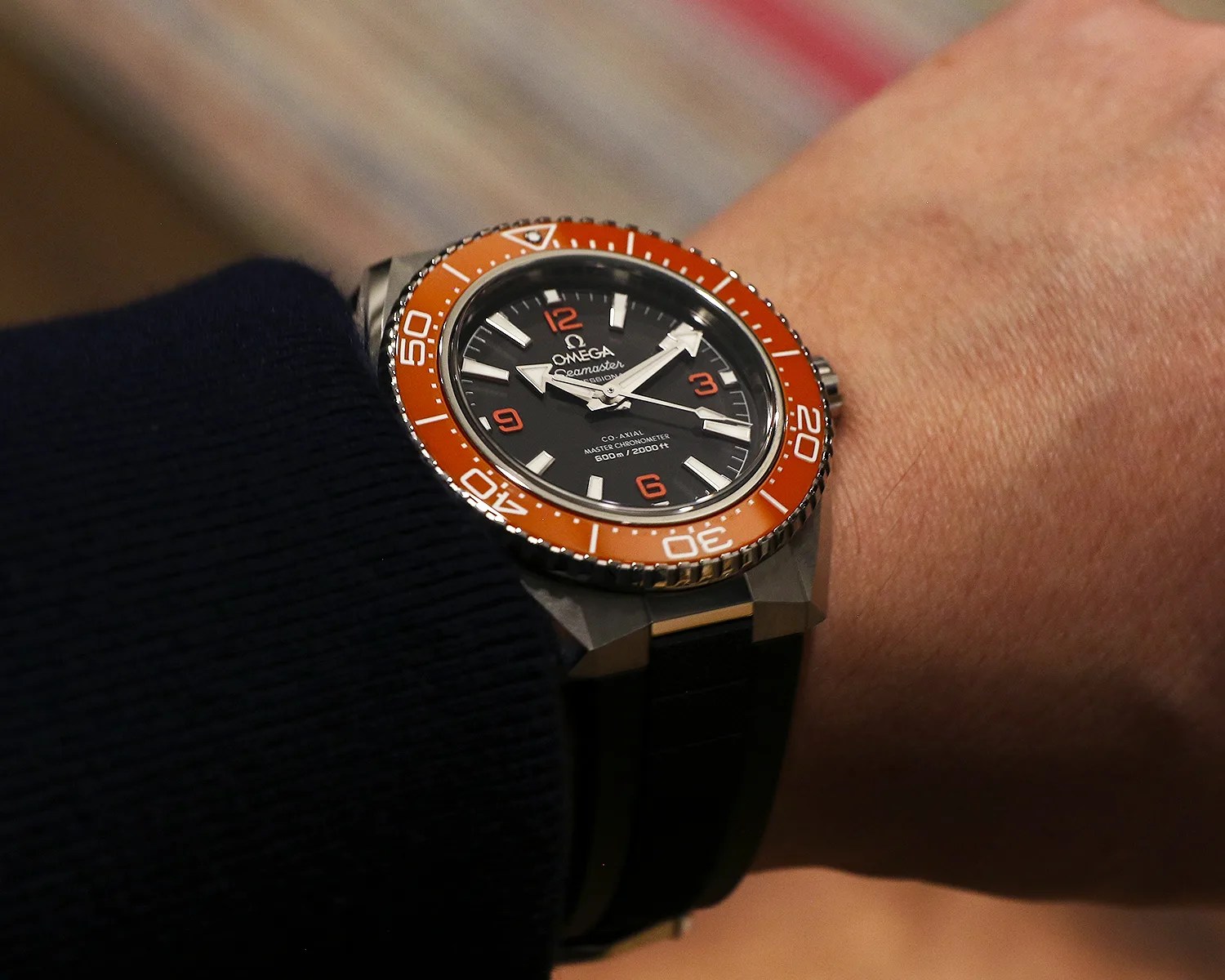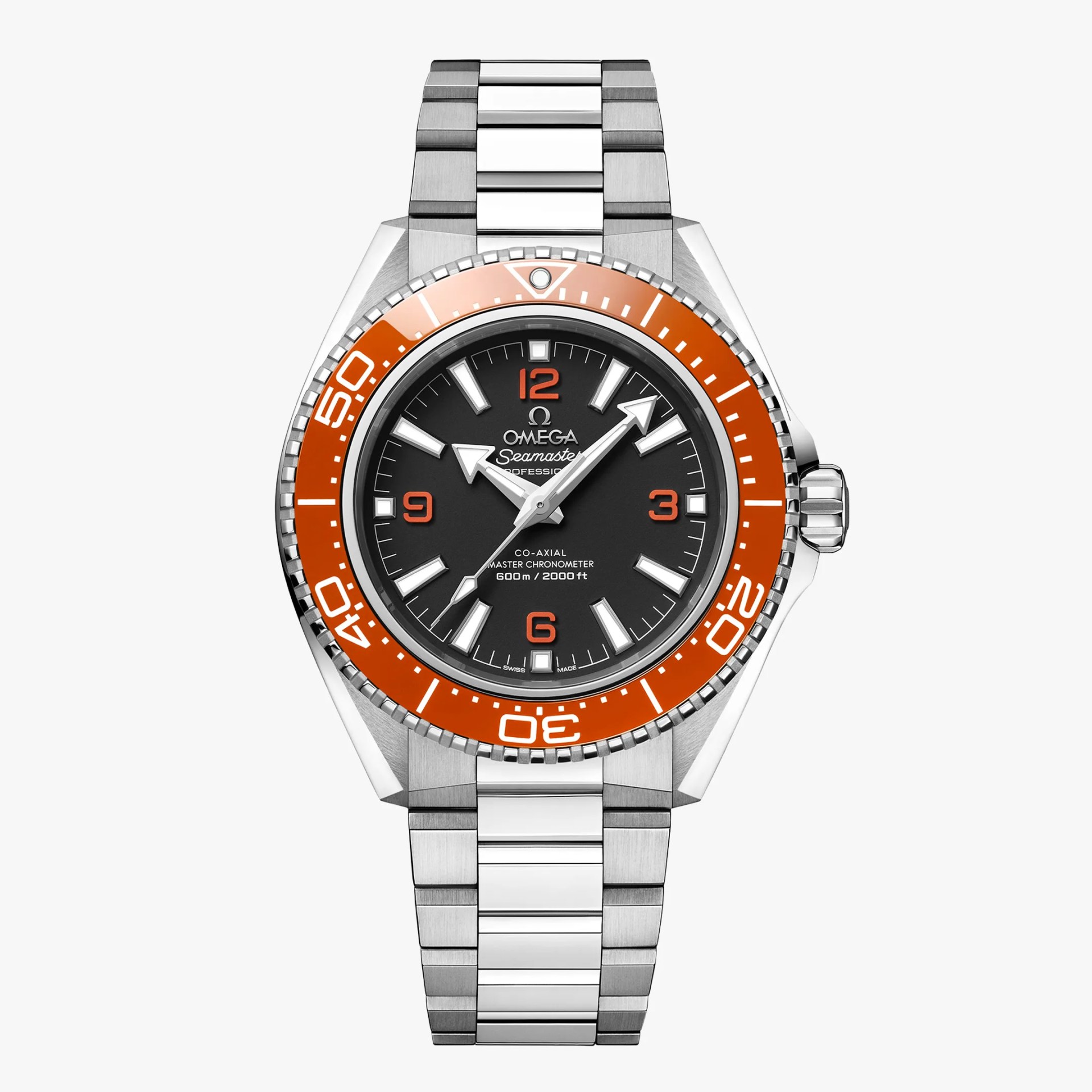When Omega debuted the original Seamaster Planet Ocean in 2005, the watch made sense. The Seamaster Diver 300M felt dated, forever trapped in the ’90s, and the Planet Ocean filled in as Omega’s modern, premium dive watch with more impressive specs and a design that combined the case language of the Diver 300M with the aesthetics of the mid-century Seamaster 300 and a sprinkling of the 2000s-era oversized watch craze.
For several years, the PO reigned as Omega’s undisputed top-of-the-line diver. Exciting new features like co-axial escapements, ceramic bezels, silicon balance springs, Liquidmetal technology, sapphire casebacks and Master Chronometer certification all appeared on the Planet Ocean before the Seamaster 300M. It’s no wonder James Bond switched to the Planet Ocean for Daniel Craig‘s first three films.
But, eventually, it started to become unclear as to just what the Planet Ocean was meant to be, and who it was for. The introduction of the retro-styled, Master Chronometer Seamaster 300 in 2014 stole some of the Planet Ocean’s thunder, as it felt a bit more premium and was more committed to the mid-century design that inspired the PO.
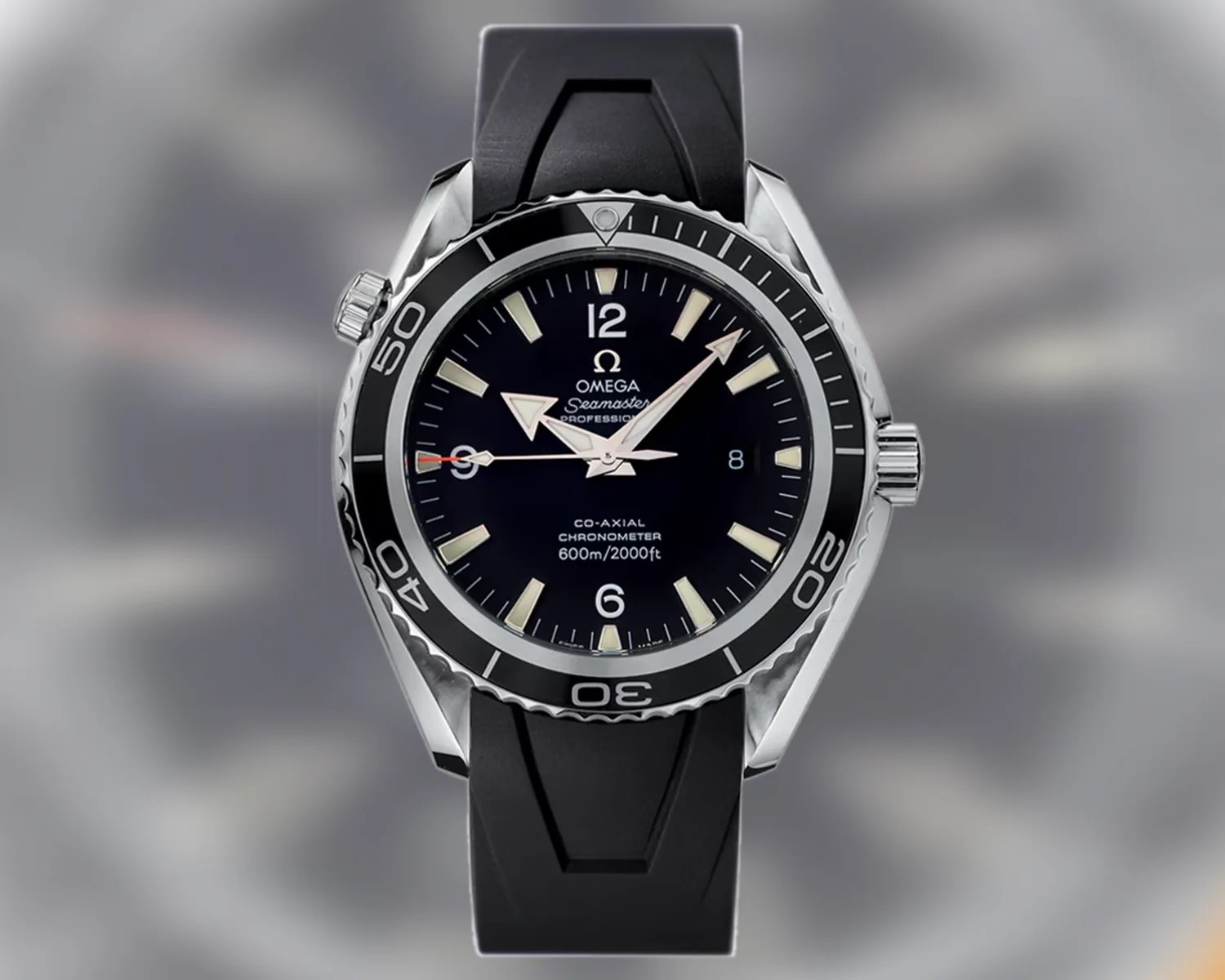
The lines were further blurred when Omega unleashed a major refresh on the Seamaster Diver 300M in 2018, adding a ceramic wave dial and bezel, sapphire caseback and Master Chronometer co-axial movement. It was also thinner than the Planet Ocean and tastefully updated the iconic ’90s look, so unless someone felt they needed the Planet Ocean’s 600m of water resistance over the Diver 300m’s 300 — which no one does — then the question became: Why buy a Planet Ocean?
The question was effectively answered in 2022, when Omega launched the Planet Ocean Ultra Deep. Based on the brand’s record-setting prototype that reached the bottom of the Mariana Trench and lived to tell the tale, the 6,000-meter water-resistant Ultra Deep was the ultimate pinnacle of Omega dive watch technology, meant to compete against the likes of Rolex Deepsea. An everyday watch it is not, but it has a clear purpose.
The regular Planet Ocean? Not so much. It has continued languishing in Omega’s catalog for several years now. James Bond hasn’t worn one since 2012’s Skyfall. It’s a dive watch without a clear reason to exist.
